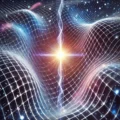Physics is Mass Heavy and Energy Light
The field of physics, as it has evolved, is overwhelmingly mass-centric. This bias stems from the very nature of our experiments: mass is tangible, measurable, and observable. It can be weighed, moved, and quantified. Particle physics, in particular, has blossomed under this paradigm, with a focus on the behavior of matter, atoms, and the particles that constitute them. But what happens when we shift our perspective to the energy domain?
The Experimentation Bias: Historically, the tools of physics have been built around what we can see, touch, or manipulate in some form. Experiments revolve around mass and particles because they provide direct, observable results. You can smash protons together and study the aftermath, or measure the gravitational pull of massive objects. But energy, particularly in its more abstract forms, isn’t as accessible. It’s not easily contained, weighed, or seen. As a result, it’s sidelined in favor of the more concrete domain of mass, and we’re conditioned to think of reality in terms of physical objects rather than underlying energy.
Energy as the Fundamental Fabric: Imagine, however, a universe composed not of discrete particles but of an energy lattice—a vast, interconnected field with “kinks” or disturbances that represent particles, molecules, and mass. In this view, mass is nothing more than a localized manifestation of energy, a temporary formation within a much larger energetic continuum. This concept challenges the very foundations of particle-based physics, and yet, it offers a compelling explanation for the interconnectedness of space, matter, and forces.
However, such a perspective is difficult to discuss, let alone prove. How do you experiment on a concept that defies the conventional tools of measurement? How do you measure a kink in the energy fabric when all of our instruments are designed to measure mass and particles? These limitations of human tools and perception are likely why the idea of an energy-based universe is not actively pursued—or even ridiculed when proposed.
A New Paradigm?: If physics were to become more energy-conscious, it could unlock a deeper understanding of phenomena that currently seem mysterious or counterintuitive, from dark energy and dark matter to the very mechanics of gravity and space-time. An energy-first view of the universe might provide a more coherent and unified theory of reality, one that connects the smallest particles with the largest cosmological structures in a way that mass-based theories struggle to achieve.
The future of physics may depend on breaking free of this mass bias and embracing the reality that energy, not mass, may be the true currency of the universe.
